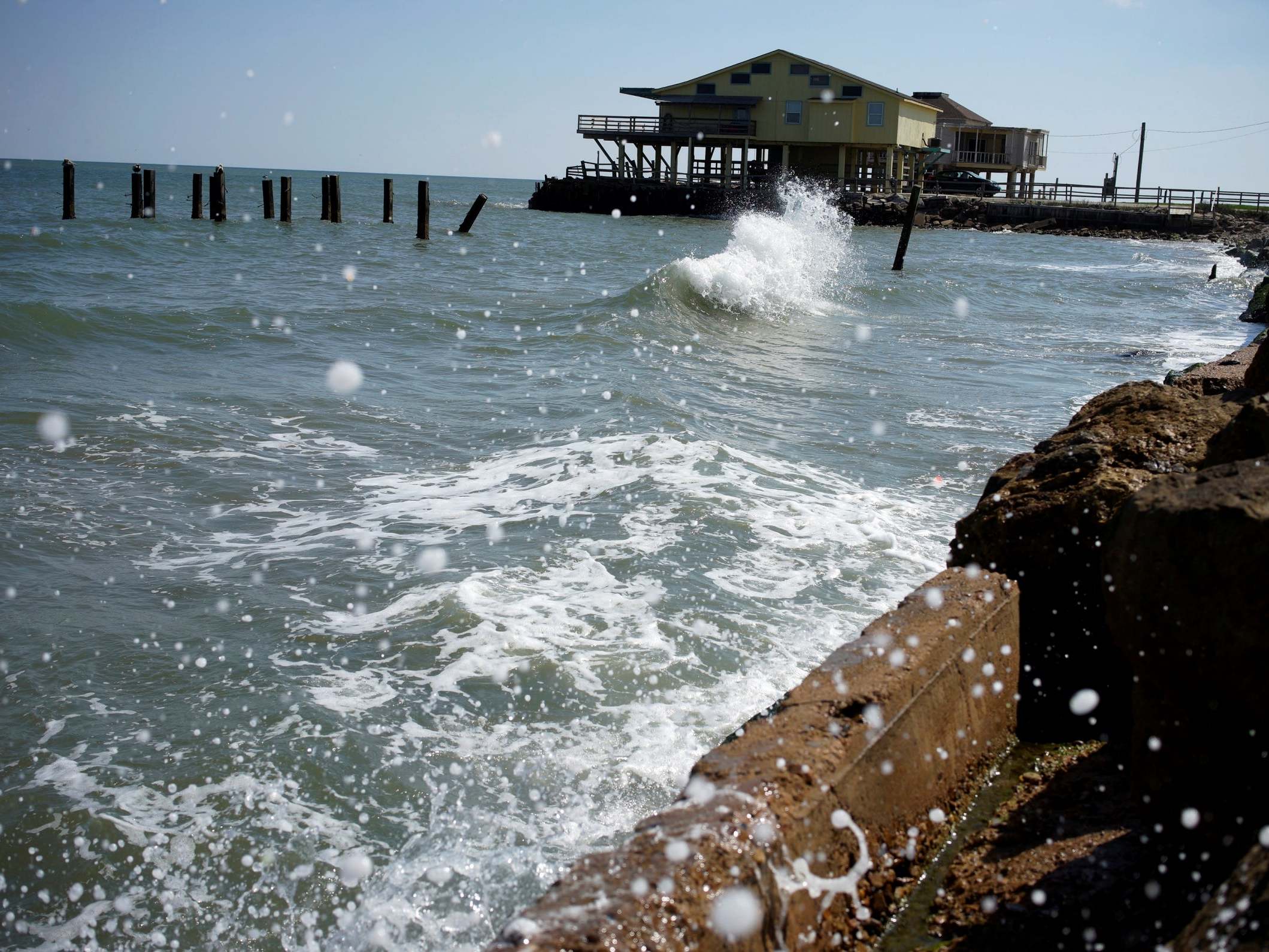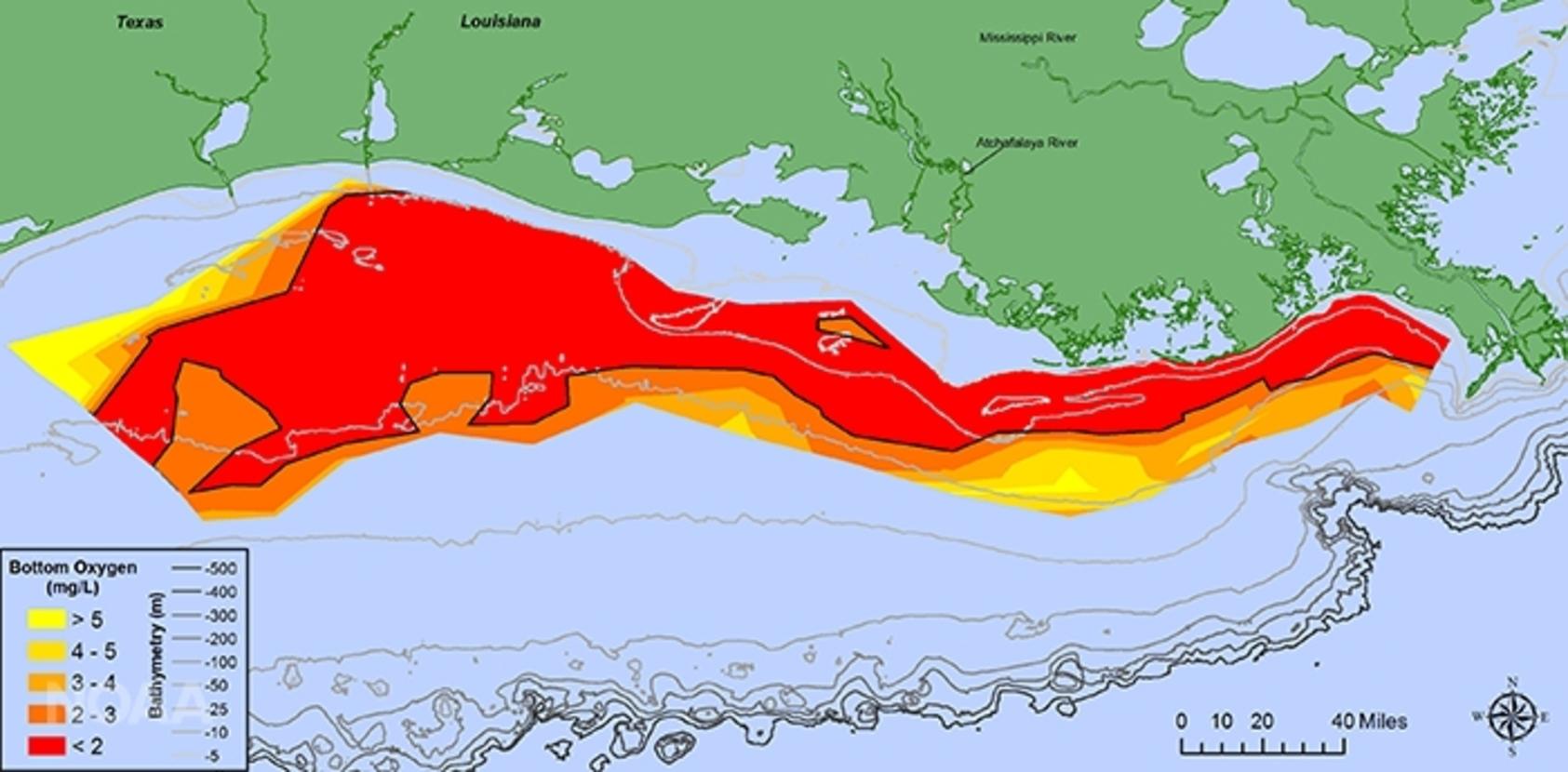‘Dead zone’ the size of Wales threatens Gulf of Mexico, endangering all marine life living there
Animals unable to swim away 'can be close to annihilated', scientist says

Your support helps us to tell the story
From reproductive rights to climate change to Big Tech, The Independent is on the ground when the story is developing. Whether it's investigating the financials of Elon Musk's pro-Trump PAC or producing our latest documentary, 'The A Word', which shines a light on the American women fighting for reproductive rights, we know how important it is to parse out the facts from the messaging.
At such a critical moment in US history, we need reporters on the ground. Your donation allows us to keep sending journalists to speak to both sides of the story.
The Independent is trusted by Americans across the entire political spectrum. And unlike many other quality news outlets, we choose not to lock Americans out of our reporting and analysis with paywalls. We believe quality journalism should be available to everyone, paid for by those who can afford it.
Your support makes all the difference.A "dead zone" of oxygen-starved water larger than the area of Wales is threatening to form in the Gulf of Mexico, endangering all marine life living there.
Scientists said the zone could spread to around 8,717 square miles, which is just short of the 2017 record but far larger than the five-year average of 5,770 square miles.
The impending disaster has been blamed on unusually high rainfall across the US Midwest in spring that has washed vast amounts of farm fertilisers along streams and rivers through the Mississippi River Basin out into the Gulf.
The nutrients in the fertilisers feed algae that die, decompose and deplete the water of oxygen, scientists at Louisiana State University said.
"When the oxygen is below two parts per million, any shrimp, crabs, and fish that can swim away, will swim away," ocean ecologist Nancy Rabalais told National Geographic magazine.
"The animals in the sediment [that can't swim away] can be close to annihilated."
The problem might get even worse if any more significant tropical storms wash out more farm-fed nutrients, the scientists said.
Sewage run off, caused by the spring floods, also adds to the problem.
Scientists with the National Oceanic and Atmospheric Administration (NOAA) predicted a slightly smaller 7,829 square mile spread. The record was 8,776 square miles set in 2017.
"A major factor contributing to the large dead zone this year is the abnormally high amount of spring rainfall in many parts of the Mississippi River watershed," the agency said in its annual "dead zone" forecast.

A solution would be to keep fertiliser and sewage run-off from getting into the rivers, NOAA said.
A Mississippi River/Gulf of Mexico Watershed Nutrient Task Force has been monitoring the problem and has set goals to reduce run-off.
It comes after scientists last year stumbled on an even bigger dead zone in the Gulf of Oman, as well as a 2015 discovery of swathes of oxygen-deprived water up to 100 miles long swirling in the Atlantic Ocean.
Additional reporting by Reuters
Join our commenting forum
Join thought-provoking conversations, follow other Independent readers and see their replies
Comments